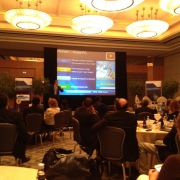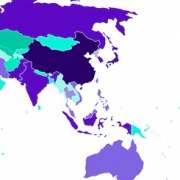Rural Connectivity Challenge: Extending Access to the Rural Edge
Over the past several years a tremendous amount of progress has been made in narrowing the urban-rural “Digital Divide.” This has primarily been accomplished through market liberalization and subsequent build out of mobile networks–some of which reach into rural localities.
While this urban-rural gap is being narrowed, this is not universal. Further, it is primarily a voice phenomenon. With regards to Internet and specifically broadband, this divide remains, and in relative terms it continues to grow even wider in most rural locations.
A May 2008 report from the International Telecommunications Union (ITU) report entitled, “Measuring Information and Communication Technology Available in Villages and Rural Areas,” defines this challenge in the following manner:
- At the time of the report, the total population of developing countries stood at 5.1 billion;
- Of this total, approximately 56 percent, or 2.85 billion lived in rural areas;
- This rural population lived in 2.96 million discrete rural localities, with an average population of 1,826.
More recent data estimates while there are approximately 5.0 billion mobile subscribers world wide–out of a world population of 6.7-6.8 billion, somewhere between a population of 1.0 and 1.5 billion live in rural localities where they are without any mobile coverage. A likely near-equal number are without “affordable” coverage.
The Global Broadband and Innovations (GBI) Program places a priority on addressing this urban-rural gap, with a focus on two key areas;
- Enhancing Universal Service Funds (USFs), and
- Promoting deployment of low cost connectivity solutions.
Universal Service Funds–A growing number of countries have established USFs, however, often these are not well designed to reach optimal benefit, nor are they managed such as to provide maximum value. The GBI has been designed to provide targeted technical assistance (TA) to help countries with better design and operations of their USFs. Current efforts are underway in partnership with Intel in carrying out a series of regional USF Workshops to move this agenda forward. Another project is underway in Africa through support of the Africa Bureau, to provide TA to a number of countries where TA will make a near-term impact.
The focus of USFs is no longer simply placing a phone or two into a rural community, but rather seeking to leverage both broadband and voice connectivity for expanding socioeconomic opportunities into these rural communities.
Nor is the focus such as to create an approach for subsidizing on-going operations of carriers operating in rural localities. There is also a focus on leveraging USFs to fund needed CapEx, where–where by working with the carriers and high tech firms producing low-cost solutions, financially sustainable approach can be deployed for connecting the lower-income, lower-density rural communities.
Low Cost Broadband and Voice Solutions–This parallel effort is also being undertaken by the GBI Program. Here the GBI is engaged in research and dialog to identify low-cost rural connectivity solutions. This focus is on providing wireless community-wide convergent networks that provide both broadband and voice services.
Preliminary research has uncovered a small but growing number of innovative solutions now being commercialized. A potential new set of technologies, Femtocells, hold significant promise in lowering the capital and operating costs for reaching into lower-income, lower-density rural communities. Several of these are solar powered solutions such they they can provide affordable coverage in areas where there is not access to a national power grid.
The GBI program has informally partnered with Femto Forum—a global Femtocell industry group and the Global VSAT Forum, a global satellite industry group, to further explore the technical and financial viability of these technologies. Discussions are underway to build off of their respective strengths towards delivering scalable, replicable, and sustainable solutions that reach even further into remote rural locations. And with this expanded connectivity, delivering access to a wide range of socioeconomic services.
Other lower-cost solution sets are being explored with regard to meeting this low-cost requirement. This exploration has included proof-of-concept trial configurations here in the U.S., as well as working with satellite and femtocell firms on broader scale international deployments.
The combination of USFs and the emerging lower-cost solutions more suitable for rural settings, hold the promise of ultimately eliminating the urban-rural “digital divide.” The GBI is working towards accelerating this where possible.








































